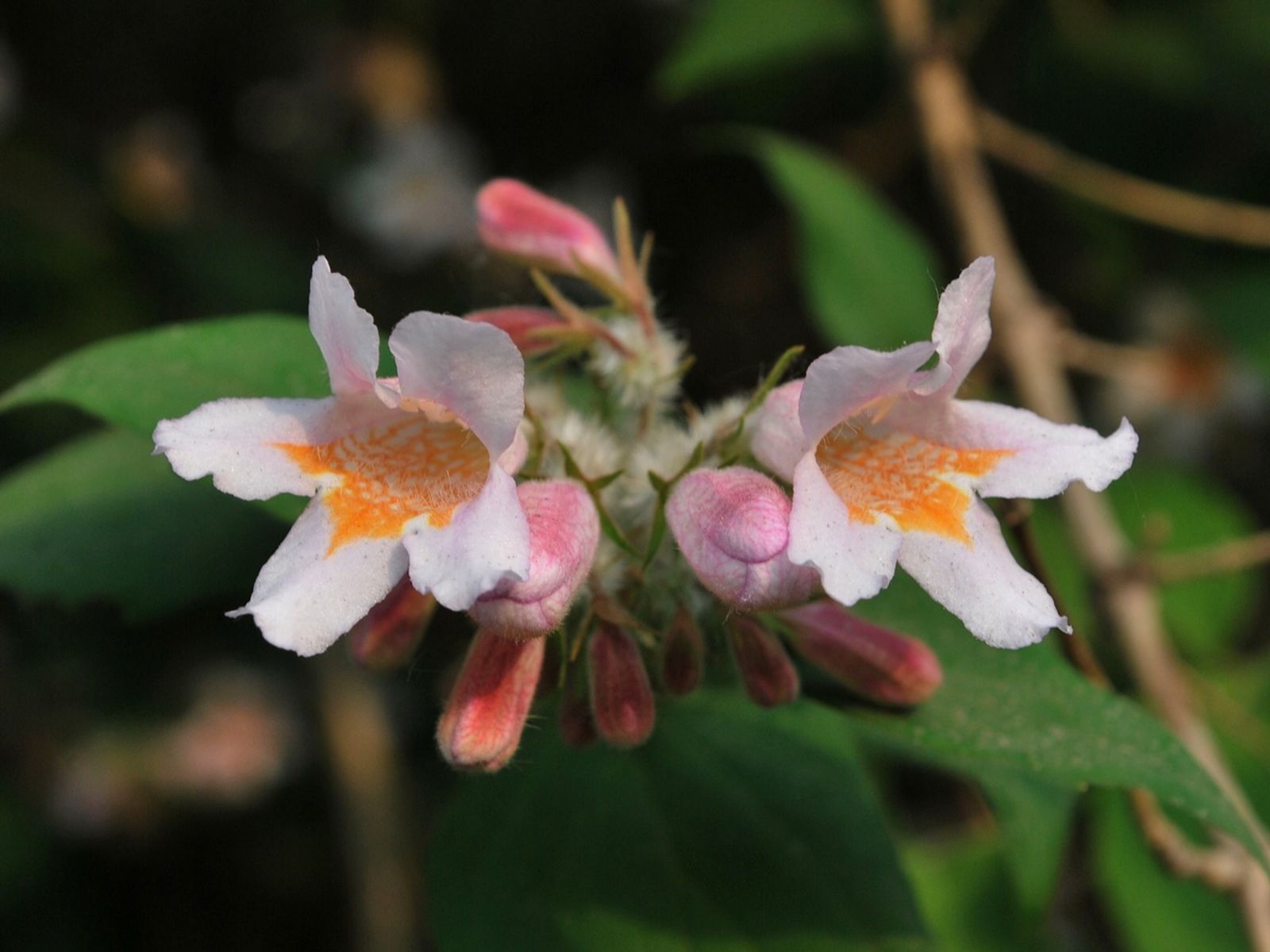
Kolkwitzia, also known as the Beautybush, is a stunning flowering shrub that can add a touch of elegance to any garden or landscape. With its beautiful pink blossoms and graceful arching branches, this plant is a true eye-catcher. But did you know that there’s more to Kolkwitzia than meets the eye? In this article, we’ll explore 19 surprising facts about Kolkwitzia that you may not be aware of. From its origins and botanical classification to its unique characteristics and benefits, you’ll discover why Kolkwitzia is truly a gem among flowering shrubs. So, whether you’re a gardening enthusiast looking to expand your knowledge or simply curious about the wonders of the natural world, sit back and prepare to be amazed by the fascinating world of Kolkwitzia.
Key Takeaways:
- Kolkwitzia, also known as the Beautybush, is a low-maintenance plant native to China. Its sweet-smelling flowers attract pollinators and can grow up to 10 feet tall, making it a stunning addition to any garden.
- With its ability to thrive in various soil types and resist pests and diseases, Kolkwitzia is a resilient and long-lasting plant. Its ornamental value makes it a prized choice for both outdoor landscapes and indoor floral arrangements.
The Kolkwitzia plant is native to China.
Originally found in the central and eastern regions of China, Kolkwitzia is a flowering shrub that has gained popularity worldwide for its unique beauty.
Kolkwitzia is also known as the Beautybush.
With its stunning clusters of pink flowers, the Kolkwitzia shrub has earned its nickname as the Beautybush.
The flowers of Kolkwitzia have a sweet fragrance.
One of the most enchanting features of Kolkwitzia is its delicate, sweet-smelling flowers that waft through the air, adding a pleasant aroma to any garden.
Kolkwitzia blooms in late spring or early summer.
Garden enthusiasts eagerly await the blooming period of Kolkwitzia, which typically occurs in late spring or early summer, filling the landscape with bursts of vibrant pink hues.
It is a low-maintenance plant.
Kolkwitzia is a hardy shrub that requires minimal care, making it an ideal choice for both experienced gardeners and beginners.
Kolkwitzia attracts pollinators.
The flowers of Kolkwitzia act as a magnet for bees, butterflies, and other pollinators, making it a valuable addition to any pollinator garden.
It can grow up to 10 feet tall.
When fully matured, Kolkwitzia can reach an impressive height of up to 10 feet, adding vertical interest to the garden landscape.
Kolkwitzia has arching branches.
The graceful arching branches of Kolkwitzia give it an elegant and eye-catching appearance, creating a visually appealing focal point in any garden.
The foliage of Kolkwitzia turns bronze in fall.
As the seasons change, the leaves of Kolkwitzia transform into a beautiful bronze color, adding autumnal charm to the garden.
Kolkwitzia is drought-tolerant.
With its ability to withstand periods of drought, Kolkwitzia is a resilient plant that can thrive in various environmental conditions.
This plant is a member of the Caprifoliaceae family.
Kolkwitzia belongs to the Caprifoliaceae family, which includes other popular flowering plants like honeysuckles and viburnums.
The shrub is named after a German botanist.
Kolkwitzia is named in honor of Richard Kolkwitz, a renowned German botanist who made significant contributions to the field of plant taxonomy.
Kolkwitzia is well-suited for use as a hedge.
Due to its dense growth habit and ability to tolerate pruning, Kolkwitzia is often used as a beautiful and functional hedge in landscapes.
It can tolerate various soil types.
From clay to loam to sandy soil, Kolkwitzia can adapt and thrive in a wide range of soil conditions.
Kolkwitzia is resistant to most pests and diseases.
This hardy shrub has a natural resistance to common pests and diseases, reducing the need for extensive chemical treatments.
It can be propagated through both seeds and cuttings.
If you want to grow more Kolkwitzia plants, you can either collect and sow the seeds or take stem cuttings and root them to create new plants.
Kolkwitzia has a long lifespan.
With proper care and maintenance, Kolkwitzia can live for several decades, providing beauty and enjoyment for many years.
The plant is prized for its ornamental value.
Whether used as a centerpiece in a garden bed or as a standalone specimen, Kolkwitzia is highly valued for its ornamental beauty and ability to enhance any landscape.
Kolkwitzia can be enjoyed in both gardens and floral arrangements.
The striking blooms of Kolkwitzia not only decorate outdoor spaces but can also be cut and used in stunning floral arrangements to bring a touch of elegance indoors.
Conclusion
In conclusion, Kolkwitzia, also known as the Beautybush, is truly a remarkable plant. From its stunning pink flowers and delicate foliage to its ability to attract beneficial insects and wildlife, Kolkwitzia is a must-have addition to any garden or landscape.
With its surprising ability to withstand various weather conditions and its low maintenance requirements, Kolkwitzia is a versatile plant that is well-suited for both beginner and experienced gardeners. Whether used as a focal point, a hedge, or a border plant, Kolkwitzia is sure to add beauty and interest to any outdoor space.
So next time you’re looking to enhance your garden with something unique and eye-catching, consider planting Kolkwitzia. You’ll be amazed at its resilience, charm, and the joy it brings to your outdoor oasis.
FAQs
Q: How tall does Kolkwitzia grow?
A: Kolkwitzia typically grows to be around 8-10 feet tall. However, with proper pruning, it can be kept at a smaller size.
Q: Does Kolkwitzia require full sun?
A: Yes, Kolkwitzia thrives in full sun. It requires at least 6-8 hours of direct sunlight per day to ensure healthy growth and abundant flowering.
Q: When does Kolkwitzia bloom?
A: Kolkwitzia blooms in late spring to early summer. Its delicate pink flowers cover the branches, creating a stunning display.
Q: Is Kolkwitzia drought-tolerant?
A: While Kolkwitzia is adaptable to various soil conditions, it prefers moist soil. However, once established, it can tolerate short periods of drought.
Q: Does Kolkwitzia attract wildlife?
A: Yes, Kolkwitzia is a magnet for beneficial insects such as bees and butterflies. Its flowers provide a rich source of nectar, making it a valuable addition to any pollinator garden.
Q: Can Kolkwitzia be grown in containers?
A: Yes, Kolkwitzia can be grown in containers, making it an excellent choice for balconies or small outdoor spaces. Just ensure the container is large enough to accommodate its root system.
Q: How often should Kolkwitzia be pruned?
A: Kolkwitzia benefits from regular pruning to maintain its shape and promote new growth. Prune immediately after flowering, removing any dead or damaged branches.
Q: Is Kolkwitzia invasive?
A: No, Kolkwitzia is not considered invasive. It is a well-behaved garden plant that does not spread aggressively.
If you're fascinated by the beauty and diversity of plants, why not explore more captivating facts about ornamental plants like Fatsia Japonica, discover the enigmatic world of landscape design, or delve into the intriguing realm of horticulture? Each topic offers a wealth of surprising insights and knowledge that will deepen your appreciation for the natural world and inspire you to cultivate your own green oasis.
Was this page helpful?
Our commitment to delivering trustworthy and engaging content is at the heart of what we do. Each fact on our site is contributed by real users like you, bringing a wealth of diverse insights and information. To ensure the highest standards of accuracy and reliability, our dedicated editors meticulously review each submission. This process guarantees that the facts we share are not only fascinating but also credible. Trust in our commitment to quality and authenticity as you explore and learn with us.


